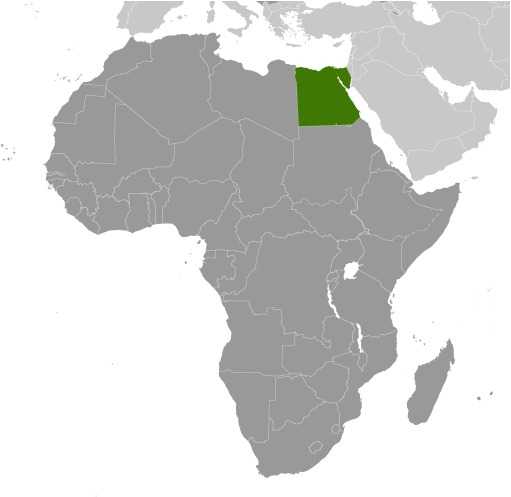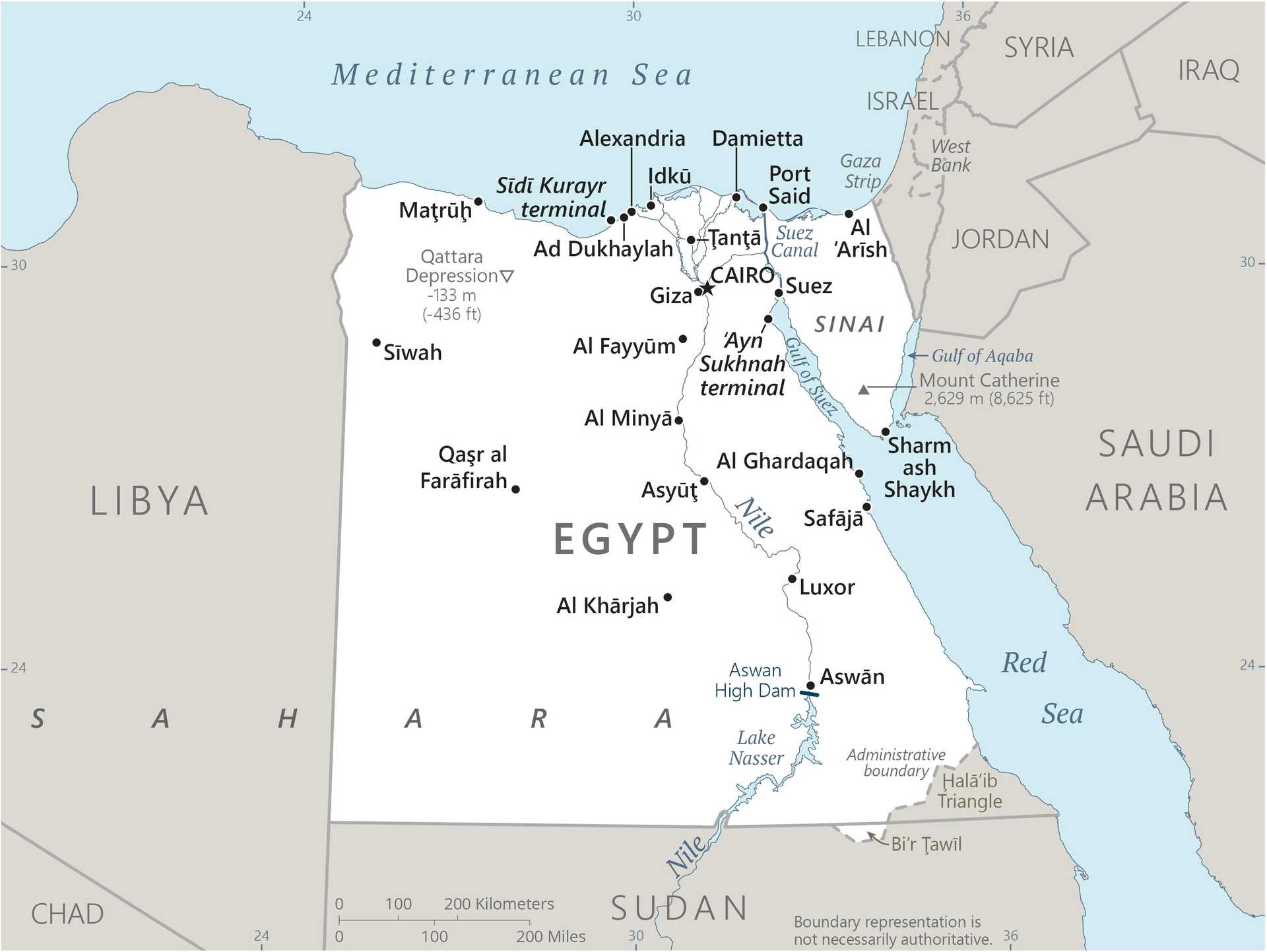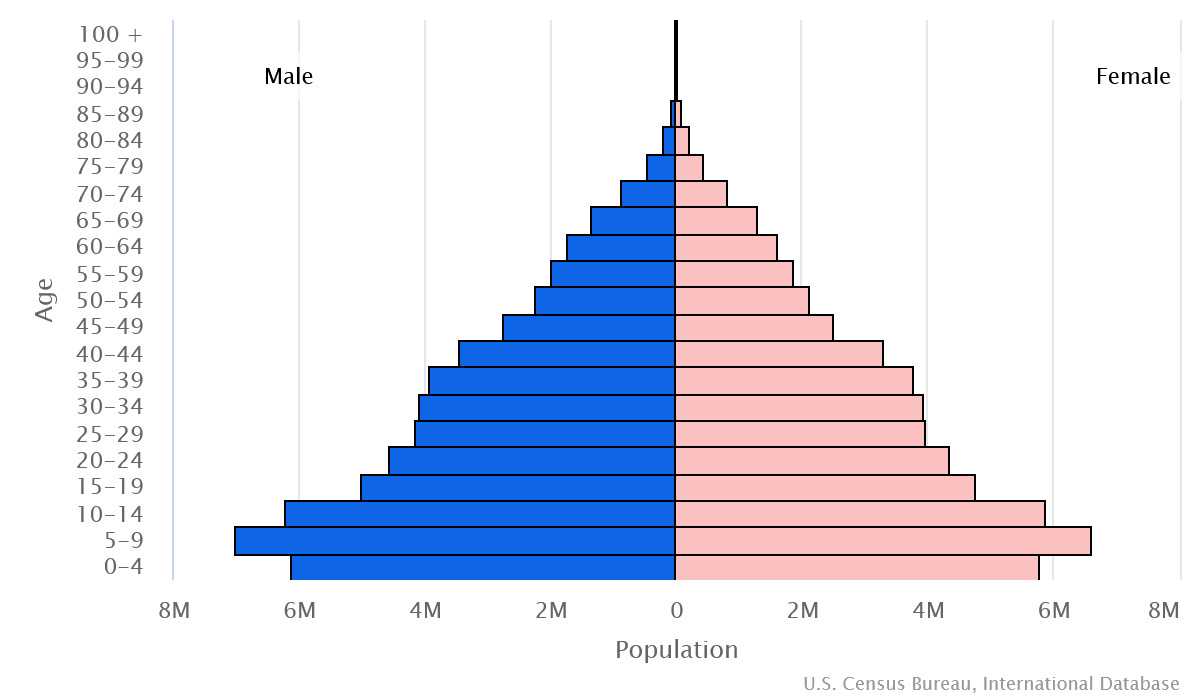Introduction
Background
The richness of the annual Nile River flood, coupled with semi-isolation provided by deserts to the east and west, allowed for the development of one of the world's great civilizations in Egypt. A unified kingdom arose circa 3200 B.C. Egypt has been ruled by many nations, becoming independent in 1952.
Geography
Area
total: 1,001,450 sq km
land: 995,450 sq km
water: 6,000 sq km
Climate
desert; hot, dry summers with moderate winters
Natural resources
petroleum, natural gas, iron ore, phosphates, manganese, limestone, gypsum, talc, asbestos, lead, rare earth elements, zinc
People and Society
Population
total: 111,247,248
male: 57,142,484
female: 54,104,764 (2024 est.)
Ethnic groups
Egyptian 99.7%, other 0.3% (2006 est.)
Languages
Arabic (official), English, and French widely understood by educated classes
Religions
Muslim (predominantly Sunni) 90%, Christian (majority Coptic Orthodox, other Christians include Armenian Apostolic, Catholic, Maronite, Orthodox, and Anglican) 10%
Population growth rate
1.49% (2024 est.)
Government
Government type
presidential republic
Capital
name: Cairo
Executive branch
chief of state: President Abdel Fattah EL-SISI (since 8 June 2014)
head of government: Prime Minister Mostafa MADBOULY (since 7 June 2018)
Legislative branch
description: bicameral Parliament consists of:
Senate (Majlis Al-Shiyoukh) (300 seats; 100 members directly elected in single seat constituencies, 100 directly elected by closed party-list vote, and 100 appointed by the president; note - the upper house, previously the Shura Council, was eliminated in the 2014 constitution, reestablished as the Senate, following passage in a 2019 constitutional referendum and approved by the House of Representatives in June 2020
House of Representatives (Majlis Al-Nowaab) (596 seats; 448 members directly elected by individual candidacy system, 120 members - with quotas for women, youth, Christians and workers - elected in party-list constituencies by simple majority popular vote, and 28 members appointed by the president; members of both houses serve 5-year terms
Economy
Economic overview
Africa’s second-largest economy; 2030 Vision to diversify markets and energy infrastructure; improving fiscal, external, and current accounts; underperforming private sector; poor labor force participation; expanded credit access
Real GDP (purchasing power parity)
$1.419 trillion (2022 est.)
$1.331 trillion (2021 est.)
$1.288 trillion (2020 est.)
Real GDP per capita
$12,800 (2022 est.)
$12,200 (2021 est.)
$12,000 (2020 est.)
Agricultural products
sugarcane, sugar beets, wheat, maize, tomatoes, potatoes, rice, milk, onions, oranges (2022)
Industries
textiles, food processing, tourism, chemicals, pharmaceuticals, hydrocarbons, construction, cement, metals, light manufactures
Exports
$76.295 billion (2022 est.)
$58.339 billion (2021 est.)
$40.102 billion (2020 est.)
Exports - partners
Turkey 8%, Italy 6%, US 6%, Spain 6%, India 5% (2022)
Exports - commodities
natural gas, fertilizers, garments, refined petroleum, crude petroleum (2022)
Imports
$97.144 billion (2022 est.)
$94.039 billion (2021 est.)
$72.482 billion (2020 est.)
Imports - partners
China 17%, US 7%, Saudi Arabia 7%, UAE 6%, Turkey 5% (2022)
Imports - commodities
refined petroleum, wheat, crude petroleum, natural gas, plastics (2022)
Exchange rates
Egyptian pounds (EGP) per US dollar -
Exchange rates:
19.16 (2022 est.)
15.645 (2021 est.)
15.759 (2020 est.)
16.771 (2019 est.)
17.767 (2018 est.)
Page last updated: Tuesday, May 14, 2024




